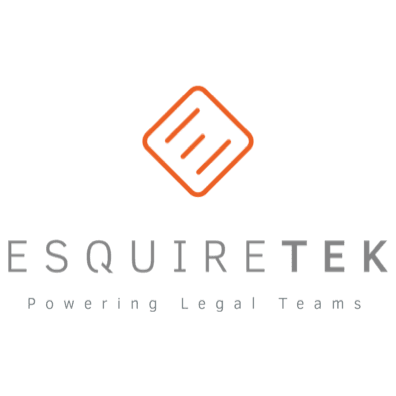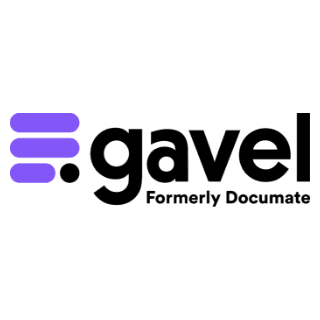Document Automation – Stumbling Blocks in Implementation and Evaluating ROI

There are obvious compelling reasons to automate your document generation. So why isn't every legal document being drafted this way? There are several reasons and being aware of them will help you overcome them.
Productivity Paradox
If a private firm bills time, then they have a strong disincentive to employ techniques that reduce the amount of time they spend to render a particular service. As long as hourly billing persists, automation makes little financial sense.
Insufficient Training
If the project is undertaken in-house, the individuals responsible for the automation are rarely given enough training (particularly if a document assembly program is being utilized). With document assembly in particular, it can take months of practice to become a skilled user of the tool.
Unsuitable Documents
Unless a lawyer drafts new documents from a blank piece of paper every time, then those documents can be automated. Every lawyer begins new documents from templates or pieces and parts of existing documents. However, many lawyers use templates or starting point documents that are related to one another (due to practice area), but which are completely dissimilar due to the fact that the lawyer has never audited the documents and tried to create similarity where it is appropriate.
For example, let's assume a lawyer drafts employment agreements for hourly workers and salaried workers. Those agreements could contain a lot of duplicate language in at least the boilerplate provisions. However, they may not share a single paragraph unless the lawyer has made an effort to standardize them. Although it would make sense to combine those documents into a single template for purposes of automation, it may be impossible to do until the underlying documents are rewritten so that the common provisions are actually consistent.
Lawyer Push-Back
A successful document assembly project is going to encapsulate an entire decision tree into the system so that it can produce perfectly customized documents with nothing more than the right answers to on-screen questions. Some lawyers feel threatened by this and simply aren't comfortable with technology which can do in seconds what was previously done by the lawyer through hours of work. The thought is, "After this project is done, what are they going to need me for?" Support staff often feel even more threatened by this (sometimes justifiably so) and a support staffer may make overt attempts to torpedo an automation project.
The cold, hard reality is that a very high percentage of legal work is routine legal work. To the extent routine legal work involves the generation of documents by a lawyer, then it can be automated, systematized and in some cases, commoditized. These facts make lawyers uncomfortable for obvious reasons, but they are true nonetheless.
Initial Project Too Difficult
This is another stumbling block for projects undertaken in-house. Most lawyers quickly realize that document automation will pay the biggest dividends with the most complex and time-consuming documents. However, those are the wrong documents to start with because of their complexity. For the person in charge of the project, it's like learning to swim by being pushed into the deep end of the pool.
If a firm or department wants to automate a complex set of documents, they should start with a simple one so that the developer has an opportunity to cut their teeth on something that isn't going to overwhelm them on the first day.
Not Enough Time to Finish A Project
Law firms and legal departments often task a support staff person or lawyer with automation projects and ask them to work on it "between projects" or "in their spare time." Of course, the time required to work on the project doesn't materialize or doesn't come in big enough chunks to get anything meaningful done. In our experience, if you don't make these projects part of someone's job description and allocate consistent time to the task, nothing gets done.
Person Tasked with Project Does Not Understand the Substantive Law
This is usually when a firm or department decides that someone from the IT/computer staff should automate the documents because they're more tech savvy. Of course, those IT folks tend to know nothing about the substantive area of law (strike one), they typically have little experience with the word processor environment in which the development occurs (strike two), and they cannot get enough face time with the lawyers who do understand the area of law to get questions answered timely and keep the project moving (strike three).
Faulty or No Return on Investment ("ROI") Analysis
Many times, a law firm or legal department will reject an automation proposal based solely on the price tag. That approach is fine as long as an ROI analysis is conducted to confirm or deny whether the project is worth doing. Many times, a project that sounds too expensive will pay for itself in 2-3 months. Therefore, it is essential to go through the ROI analysis before deciding yes or no on any particular project.
What Is the Return on Investment of the Purchase?
Technically, ROI is an estimate of the financial benefit (the "return") on money spent (the "investment") for a particular project. When calculating your cost, only include direct costs and expenses that are driven by the proposed project. Your calculation of return should include tangible benefits (bottom-line revenue increases or cost savings) and intangible benefits. When evaluating benefits, consider the following criteria:
- Number of people helped: the higher the number of people helped by the proposed project, the higher the ROI. In this case, everyone in your office could use the system.
- Frequency of use: the more frequently an application will be used, the higher the ROI.
- Cost of production: the higher your internal cost to deliver the service or product, the greater the benefit from automation or technical assistance.
- Potential to re-use: the greater your potential to re-use the data or information in the proposed new system, the higher the ROI.
- Communication efficiencies: the easier the proposed project ### makes it for your firm to communicate with clients or your employees to collaborate and communicate with one another, the higher the ROI.
- Increased accuracy: the more a product or service increases accuracy, the higher the ROI.
Calculating Cost Savings
Before you can figure out savings, you must first figure out what your costs are. Therefore, you'll need to conduct a workflow analysis. Determine what steps are involved, how long each step takes, and the costs associated with each step. After you've got that down, figure out how many of those transactions you average per week, month and year. This will help you determine your true costs so you can figure out what your savings might be. While you're doing this, you should consider which steps, if any, can be eliminated. The overall processes should also be scrutinized because it won't help to automate a bad process.
Payback Period
This is the time it takes for the return to equal the investment. With technology projects, most experts agree that you should look for payback periods of one year or less. Furthermore, once a project is past its payback period, you should not be afraid to discard it for something better.
Other Factors Affecting ROI
Will the new technology increase the competence of your staff and make the office more efficient?
The best technology initiative will fail if your colleagues and staff refuse to use it or don't understand it sufficiently to use it. You have to think about this issue in advance. It helps to bring the staff into the technology decision-making process early. This is essential if they are the ones who will be working with the new hardware or software. While they cannot dictate what you buy, their ideas can improve it, and their participation is essential if the system is to work. Without this participation and "buy-in," it can be an uphill battle.
Will the new hardware/software allow you to do something you couldn't do before?
For example, if you currently refer to outside counsel all transactions of a particular type, then a new piece of technology may allow you to pull that work back inside your office
Will the quality of your services be improved?
Any technology that enables you to provide more comprehensive, faster, more accurate or less expensive service to your clients should be given special consideration. This also applies to technology that allows you to communicate better with your clients.
Sample analysis
Typically, lawyers have a difficult time ascertaining their hard and soft costs associated with rendering a particular service. For example, a solo estate planning lawyer might be presented with an option of buying an estate planning document assembly system. Let's say the cost is $12,000. Many lawyers will dismiss that cost immediately as too expensive and not give it a second thought. However, the ROI analysis might have worked out like this:
- Lawyer handles 4 plans per week @ $750 each (flat fee).
- Average wage + benefits = $30/hr (internal costs); and the typical transaction takes 8 hours from start to finish.
- Therefore, the current profit per plan = $510 or $97,920/yr.
- Automated estate planning system cost = $12,000.
- Using the proposed system, the lawyer's total time to complete a plan drops from 8 hours to 1.5 hours.
- Profit per plan goes to $705 or $135,360/yr.
Therefore, revenue would increase by $37,440 in the first year and the system would have paid for itself by the fourth month of use. Most experts on this subject say that if the payoff is 12 months or less, then it is a good idea to pull the trigger.




